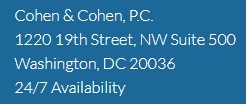While no two personal injury lawsuits are the same, there are several common steps that will occur in every case.
An Injured Plaintiff Consults an Attorney
The predicate for any personal injury lawsuit is that the plaintiff is injured by a negligent or intentional act of the defendant. The plaintiff will have to consult with an attorney to determine whether they have a viable claim against the defendant and whether they want to file suit. The attorney will likely conduct a preliminary investigation into the plaintiff’s claims and damages. If the plaintiff’s damages fall below a certain amount — usually between $5,000 and $10,000 — they will need to file their lawsuit in small claims court. If the attorney decides that the plaintiff has a viable claim and has suffered sufficient damages, the attorney may agree to take on the case. When the plaintiff hires the attorney, an attorney-client relationship has been formed.
The Plaintiff Files a Complaint and Serves the Defendant
Once a plaintiff decides to file a lawsuit, they will need to file a complaint with the appropriate civil court and serve the defendant with the complaint. The complaint outlines the claims the plaintiff is alleging, the causes of action the plaintiff is suing for, and the relief the plaintiff is requesting. In most states, the plaintiff will have around 30 days to locate the defendant and serve them with the complaint. Serving the defendant means delivering a copy of the complaint to them so they have notice that they are being sued.
The Defendant Hires an Attorney and Files an Answer
A defendant usually has around 30 days to choose an attorney before they must answer the complaint. If the lawsuit filed against the defendant is of the nature that the defendant’s insurance policy will cover any potential recovery by the plaintiff, the defendant must notify their insurance company of the lawsuit as soon as possible. The defendant’s insurance company will then hire an attorney for them. Once the defendant has hired an attorney, they will need to file an answer to the complaint with the court and serve the answer on the plaintiff. The defendant’s answer should confirm or deny the allegations made in the complaint.
Discovery Is Conducted
Before trial, both the plaintiff and the defendant will conduct discovery to uncover the evidence and procure the witnesses they will use at trial. The parties will also appear in court to apprise the judge of the case’s progress, to discuss mediation and arbitration, and to set a trial date. The discovery process will also include each side taking the depositions of opposing parties and witnesses. Depositions are question-and-answer sessions that are taken under oath. Discovery often takes several months to complete. Once discovery has concluded, either party might file a motion for summary judgment, alleging that the other party cannot win at trial. If these motions fail and the parties have not settled the case, the case will proceed to trial.
A Trial Is Held
Trials will typically last a few days. During trial, each side will present evidence and question witnesses to prove their case. At the conclusion of the trial, the judge or jury will determine whether the defendant is at fault for the plaintiff’s injuries, and if so, how much the defendant should pay the plaintiff in damages.
Post-Trial Appeals and Motions
After the trial, either party can appeal the judgment or file post-trial motions with the judge, such as a motion to set aside the judgment. Once these appeals and motions have been exhausted, the losing defendant will have to pay the plaintiff the damages that the jury or judge awarded at trial or that the appellate court awarded on appeal.
Contact a personal injury lawyer, like one from Eglet Adams, to learn more about personal injury accidents and to determine if you may have a case.

